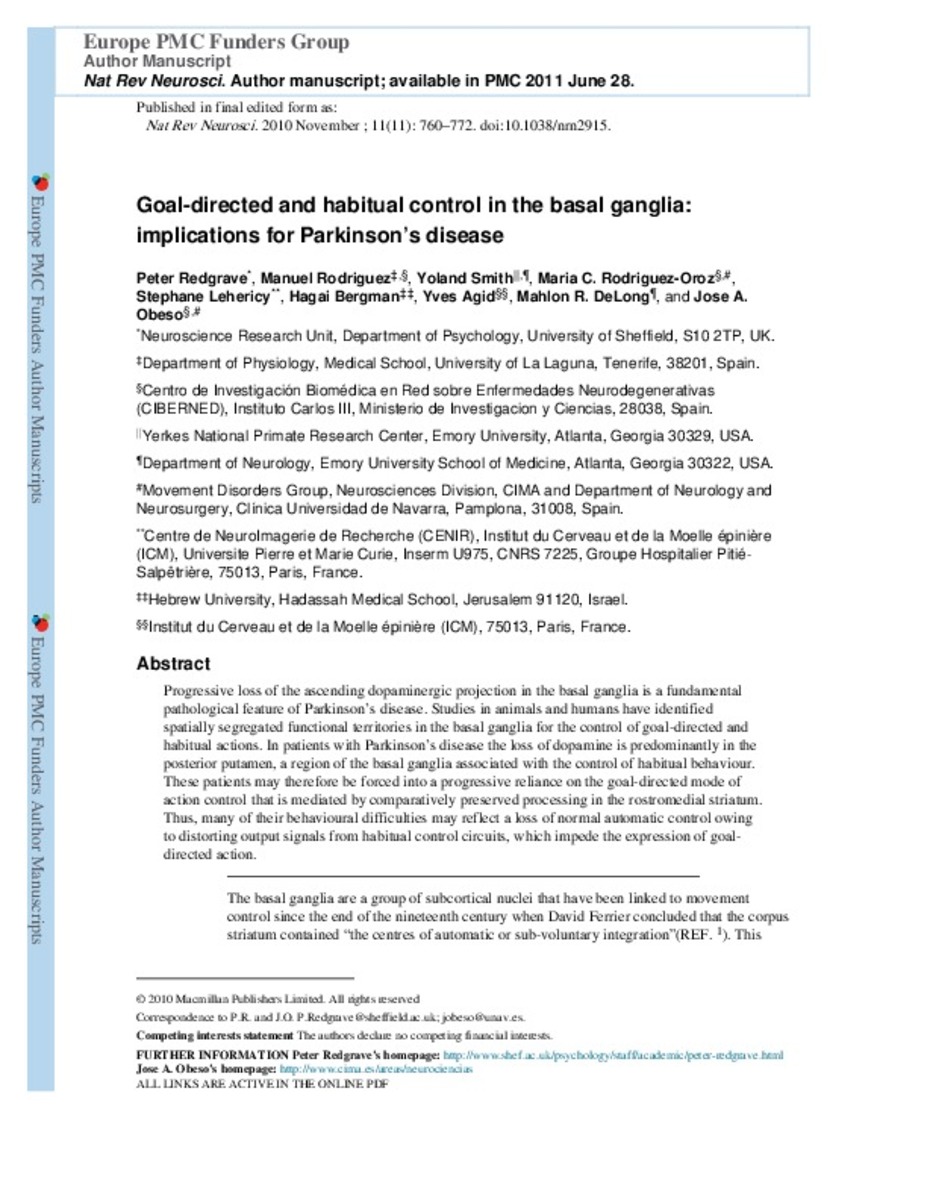Goal-directed and habitual control in the basal ganglia: implications for Parkinson's disease
Palabras clave :
Parkinson Disease/physiopathology
Models, Neurological
Nerve Net/pathology
Neural Pathways/pathology
Fecha de publicación :
nov-2010
Editorial :
Nature Publishing Group
Cita:
Redgrave P, Rodriguez M, Smith Y, Rodriguez-Oroz MC, Lehericy S, Bergman H, et al. Goal-directed and habitual control in the basal ganglia: implications for Parkinson's disease. Nat Rev Neurosci. 2010 Nov;11(11):760-72.
Aparece en las colecciones:
Estadísticas e impacto
0 citas en

0 citas en

Los ítems de Dadun están protegidos por copyright, con todos los derechos reservados, a menos que se indique lo contrario.







